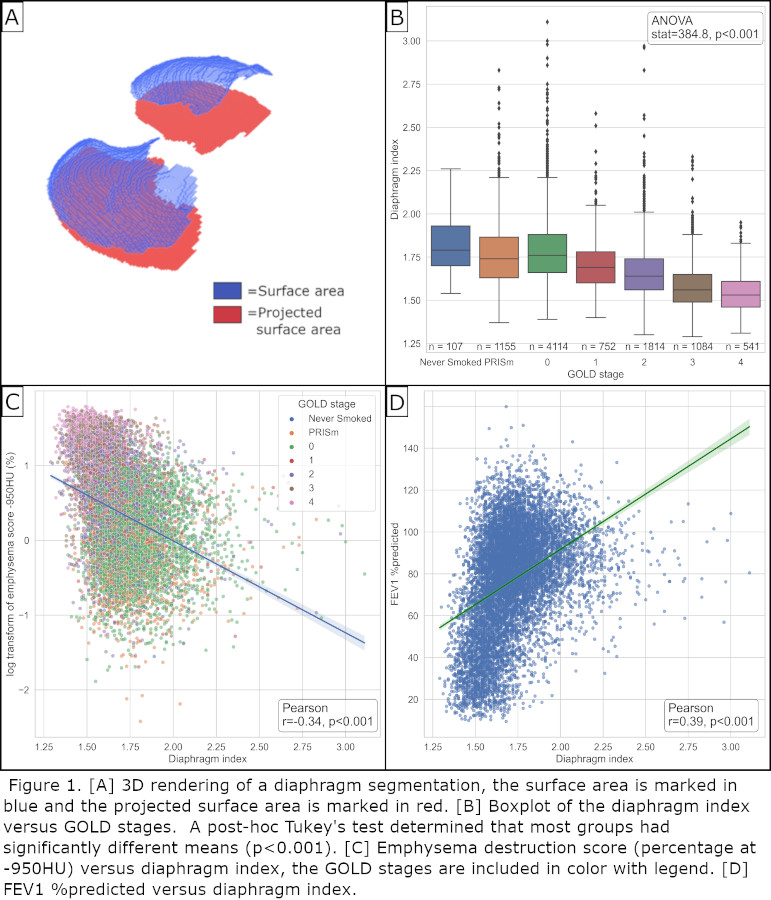Abstract
Introduction
The relation between the degree of diaphragm flattening and lung function impairment in COPD remains
largely unknown. We aim to develop a CT-based diaphragm analysis tool to investigate the association
between diaphragm configuration and pulmonary function in COPD.
Methods
We developed a CT-based diaphragm analysis tool based on: 1) identification of the pulmonary lobes using an AI-based lung quantification platform (LungQ, Thirona, Nijmegen, The Netherlands), 2) extraction of a 3D-shape map of the lung-diaphragm intersection (Figure 1A), and 3) calculation of a diaphragm index (ratio of diaphragm surface area/projected surface area). Inspiratory CT scans from the first phase of the COPDGene study (n=9567) were used to evaluate the relation between the automatically extracted diaphragm index and FEV1 %-predicted, GOLD stages, and CT quantified emphysema (LAA<-950) (Figure 1).
Results
We found a significant association between the diaphragm index and emphysema (Figure 1C), FEV1 %-
predicted (Figure 1D), and the COPD GOLD stages (Figure 1B).

Conclusions
With an in-house developed, automatic CT-based diaphragm analysis tool, we showed significant
differences in diaphragm configuration relative to pulmonary function in COPD.